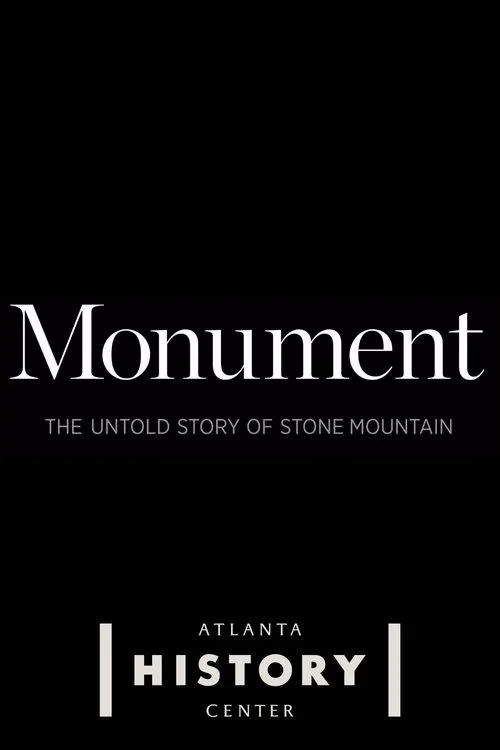Monument: The Untold Story of Stone Mountain

Plot
Monument: The Untold Story of Stone Mountain is a documentary film that delves into the fascinating and often tumultuous history of the colossal carving at Stone Mountain, a giant granite mountain located in Georgia, just outside of Atlanta. This monumental sculpture, which depicts three key figures of the Confederacy - Jefferson Davis, Robert E. Lee, and Stonewall Jackson - is an iconic symbol of the American South, yet its creation was shrouded in controversy and fueled by racism. The film begins by exploring the earliest history of Stone Mountain, which was formed over 270 million years ago through the erosion of sand and stone in the Jurassic Era. For thousands of years, Native American tribes inhabited the area, with the Cherokees establishing the first permanent settlement in the early 19th century. As the white population began to encroach on Cherokee lands, tensions escalated, and the Cherokees were forcibly removed in the 1830s. This brutal episode in American history serves as a precursor to the controversy that would surround the Stone Mountain carving. In 1915, the United Daughters of the Confederacy, a white women's organization dedicated to preserving Confederate heritage, conceived of the massive sculpture that would bring Stone Mountain to international attention. The plan was to carve the largest granite sculpture in the world, depicting three of the Confederacy's most revered leaders. However, this ambitious project was not just a tribute to the fallen; it was also a calculated move to perpetuate white supremacy and suppress the histories of African Americans and Native Americans. The carving process itself was a technological marvel, employing a combination of hand drilling and dynamiting to excavate nearly 19 acres of granite. The artist selected to oversee the project, John Cecil Wurdham III (though most notably, Gutzon Borglum was the initial, but soon after left), was an experienced sculptor who had previously worked on lesser-known projects in the area. Despite Wurdham's skills, the carving's slow pace and numerous setbacks made it an object of scorn and mockery for many, who saw it as a white man's boondoggle. As the carving continued, the city of Atlanta grew in power and importance, with many city leaders seeking to capitalize on Stone Mountain's tourist potential. The carving became a symbol of the Old South, and its depiction of Confederate leaders served as a potent reminder of the city's complex and often fraught history. Atlanta History Center's research emphasizes the importance of understanding this contentious context, arguing that the Stone Mountain carving should not be seen as a straightforward tribute to Confederate heroes but rather as a product of a time when racism was pervasive. Throughout the film, Monument: The Untold Story of Stone Mountain employs a range of narratives, interviews, and archival footage to weave a compelling and multifaceted exploration of this iconic American landmark. Historian and documentarian, Brian Jordan, notes that the city's efforts to preserve and present the Stone Mountain site as a unified national monument belie the inherent complexities of this problematic monument. Rather than celebrating Confederate history, the film instead emphasizes the need to confront the painful truth of America's founding, and the brutal manner in the ways it has treated many. Many argue that the carving should be seen as a legacy of Jim Crow laws and segregation, highlighting systemic inequality and racism that the United States has experienced for centuries. The Atlanta History Center emphasizes the significance of examining the Stone Mountain carving through the lenses of power dynamics, class struggles, and identity, as well as the ways in which our society has chosen to honor (or not honor) our history. Monument: The Untold Story of Stone Mountain, a cinematic offering of Atlanta History Center, raises profound and thought-provoking questions about how and why we remember our shared history, especially in situations that are as complex as, the infamous carving of Stone Mountain. The film serves as a testament to the power of storytelling to illuminate the past, to challenge assumptions, and to foster a more nuanced discussion about the meaning and significance of our cultural and historical landmarks.
Reviews
Recommendations




